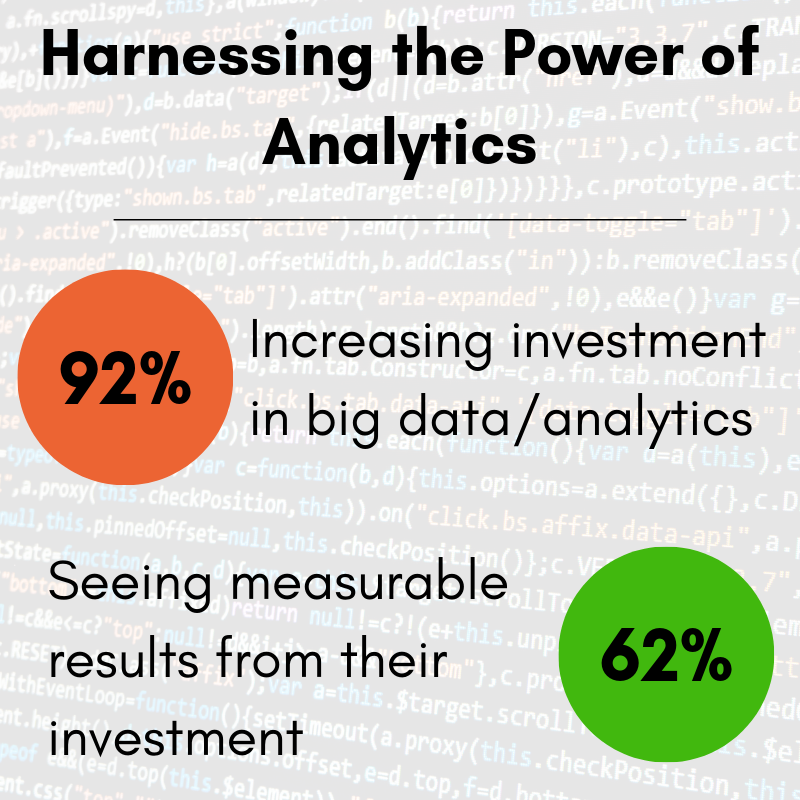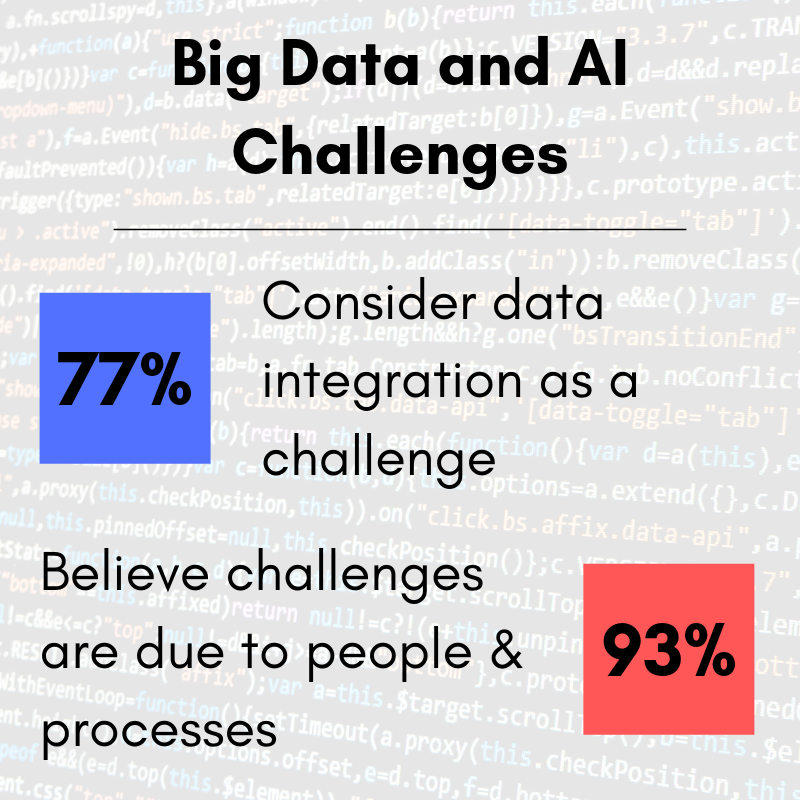The process of implementing a data analytics solution into an organization can be time-consuming and costly. Once an analytics platform is in place, employees must learn to use the technology. However, it seems the largest stumbling block in the data integration process is not so easily defined.
A surprising development arose from the 2019 Big Data and AI Executive Survey conducted by NewVantage Partners. While many organizations are increasing their investments in analytics, there are many stumbling blocks. And the biggest challenge to analytics success: people.
Survey results
The NewVantage survey did have some good news in terms of analytics investments:
- 92% of respondents said they are increasing their investments in big data and AI
- 62% have seen measurable results from their investments
- 48% say their company “competes” on data and analytics

When it comes to challenges, unsurprisingly, the survey found that 77% of respondents considered data integration to be a challenge. The reasons behind this challenge were what rose eyebrows; 93% of those surveyed found people and process to be at the heart of their integration challenges.
What are the implications of this? With AI and big data moving forward at warp speed, it looks like today’s workforce has been left in the dust unable to completely harness the informational power at their fingertips.

Why is it happening?
The main culprits in these findings are deeply baked into the business process and hard to change. Of those surveyed, “40.3% identify lack of organization alignment and 24% cite cultural resistance as the leading factors contributing to this lack of business adoption.” These two factors are closely linked to each other. It is very hard to relive the lives of employees who grew up doing things in different ways.
This dynamic becomes more pronounced as one looks higher up the organizational totem pole where employees have experienced a high amount of personal success. If intuition and experience have gotten me this far, why change now? Cultural resistance then necessitates organizational realignment if there is any hope of shifting to data-driven decision-making.
Integrating data into an organization requires the overthrow of the standard decision-making process. This means C-suite executives will have to take greater stock in the opinions of others who may be more data-savvy. Speaking with Forbes, the head of leadership development and training for a large Asian trading company said that, “Although we are making some progress, we still make a lot of decisions based on the HIPPO [highest-paid person’s opinion] in the room.” The high impact and clear perspective that data analytics provides hinges on the interplay between HIPPOs and data analysts. Luckily, there are researchers addressing this problem.
How does this change end?
A recent study that came out of the 2018 Global Engineering Education Conference found that data analytics skills were the most important factor in realizing value from big data; however, these skills were also the hardest to acquire. To excel in analytics, an employee must employ a combination of hard and soft skills.
At the most basic level, the ideal data analyst must be proficient in statistics and most likely coding. On top of this, he or she must be able to turn outliers or trends into practical business suggestions. Finally, the analyst must properly communicate information in such a way that stirs action in the executive team within the organization. This final piece is particularly difficult in light of the power of HIPPOs in companies around the world.
Related Reading:
- Data Analytics and Artificial Intelligence in the Race for a Coronavirus Vaccine - September 14, 2020
- The Balance Between Data Insights and Governance on the Path to Returning to Work - August 26, 2020
- Data Analytics and the Fight Against COVID-19 - August 10, 2020


